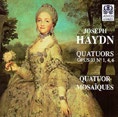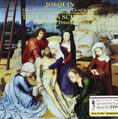Music moves us–it excites, inspires and soothes us. Music opens doors to new ways of thinking and feeling. At first pass, some music just sounds like noise, but our tastes can expand. Ultimately, we gravitate toward genres of music that speak to us. These five albums are list leaders in each of the genres that I rely upon, for listening and singing, for enjoyment and sustenance.
By Mike Kassatly,
Math Department
 Thriller
Thriller
Few people miss out on popular music; it’s aptly named. It’s accessible—catchy melodies and steady, rhythmic beats—and it provides useful distraction. Michael Jackson’s Thriller, a smashing success in 1982, is quintessential pop. The album is ubiquitous, and several songs still play frequently. The video for “Thriller” is iconic. When “Beat It” plays at a wedding, everyone jumps up to the dance floor. If “Billie Jean” plays during a car ride, you can’t help but sing along. Popular music brings us together. A medium for social interaction, it gives us cultural currency and permission to let our guards down.
 Blue
Blue
Folk music is introspective, frequently exploring lost love and political unrest. Writing or performing folk songs can be cathartic, and listening can be a comfort. Joni Mitchell’s Blue carried me through my first heartbreak. The soul-bearing lyrics assured me that I was not alone. The free-flowing melodies helped me release myself from the grip of my emotions, to redirect my passion into music, to trust my voice and sing without fear or tension. Simple in composition, the creativity of Joni Mitchell’s vocals and well-executed balance of piano or guitar accompaniment sustain the poignancy of this album through decades of listening.
 Pure Ella
Pure Ella
To focus on jazz vocals might seem to counter the heart of jazz. Yet singer Ella Fitzgerald’s jazz sensibility is unmatched, and Pure Ella highlights her extraordinary versatility. The first track, “Mack the Knife,” is a playful tribute to Louis Armstrong, something few jazz vocalists dare attempt. On “They Can’t Take That Away from Me,” Ella sings alongside Armstrong and the real fun begins when they harmonize in the third verse, trading contributions, each feeding off the smooth embellishments of the other. “Misty” features Ella’s silky melodic voice, unadulterated. “Blue Skies” opens in similar fashion and then Ella seamlessly transitions into a phenomenal sequence of scat singing. All 18 tracks are easy on the ear and oozing with creativity. She reigns gently on her band, as they follow her intuitive lead through melodic and rhythmic improvisations, harmonic changes, and interludes of lyrical anomalies.
 Haydn, String Quartets
(Op. 33), Quatuor Mosaiques
Haydn, String Quartets
(Op. 33), Quatuor Mosaiques
Chamber music activates the intellect, as the interplay between instruments simulates a well-formed conversation, like the dialogue of a Shakespearian play. Lacking words, it is by nature abstract and open to interpretation, to whatever meaning the performer and listener assign. When I need an escape from the day’s worries, but also need to work efficiently at home, I listen to Joseph Haydn’s String Quartets. Proportioned and constructed with light, playful melodies, String Quartet in D Major (Op. 33, No. 6) quickly becomes familiar to the ear, while the complexity of the harmonies and balanced composition ensures that the listening experience is always fresh. The mathematical form promotes clear thinking and sustained focus, and the playful melodies reduce stress and encourage creativity. All the better if you can listen when you don’t have pressing work, as your mind can focus on the intricate fabric woven by the four instruments.
 Josquin Desprez, Missa Pange Lingua, The Tallis Scholars
Josquin Desprez, Missa Pange Lingua, The Tallis Scholars
Sacred choral music moves me in a way that no other music can. Whether singing or listening, I achieve a freedom from thoughts and worries that is rare and uplifting. I lose myself and feel a sense of belonging to something much greater. For a truly transcendent listening experience, I recommend Missa Pange Lingua by Josquin Desprez. Each movement opens with a mesmerizing melismatic duet. Voices join to form a polyphonic wave that sweeps the listener into an ethereal ocean of meditation. In the Credo, the polyphony pauses, yielding to an intensely intimate measured homophony depicting the incarnation of the Holy Spirit in the Virgin Mary. Whether or not you are Christian, the import of Josquin’s belief is undeniable in this moment. Finally, in the Agnus Dei, layered beneath the sustained, delicate praise is the palpable pleading of each individual voice, building to a chorus, representing all of humanity, calling for an end to our suffering.



